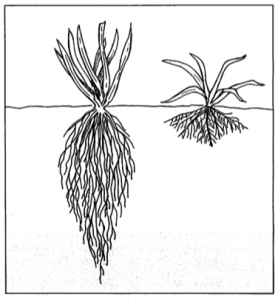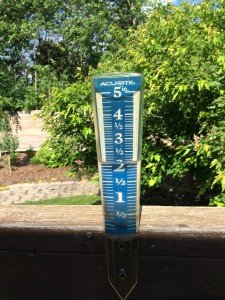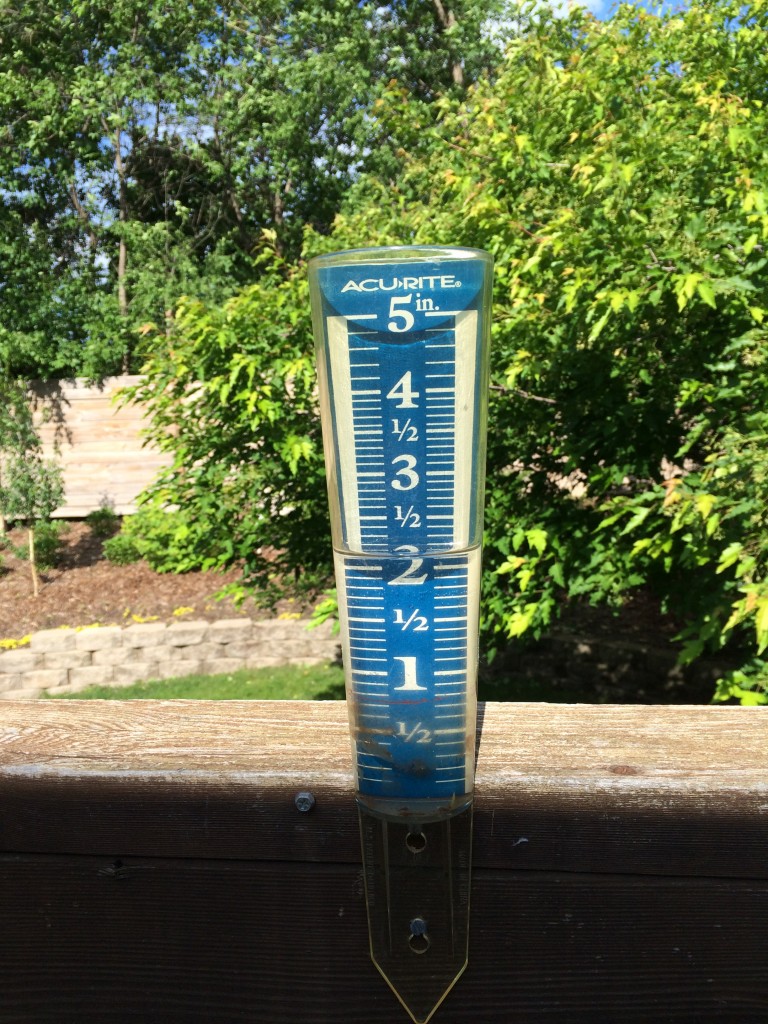Are You Overwatering Your Lawn?

Proper watering is one of the most challenging and misunderstood aspects of lawn maintenance. It is important for supplementing rainfall, washing in certain fertilizers and pesticides, keeping the soil moist for seed germination, and cooling the turf on hot summer days. Proper watering practices have taken on even more significance in recent years with the increased importance of water conservation, and watering restrictions are becoming commonplace throughout the country.
 No matter what kind of watering system you use, you want to try and minimize your water usage. Grass grows deep, healthy roots when you water deeply but infrequently. Mowing at the proper height for your grass and feeding it regularly will help establish a deep, strong root system as well. As a rule of thumb, grass needs about an inch of water per week whether from rain or watering. Frequent, shallow watering causes shallow roots to grow, which makes your grass susceptible to drought and other problems. Also, try to water early in the day to avoid evaporation.
No matter what kind of watering system you use, you want to try and minimize your water usage. Grass grows deep, healthy roots when you water deeply but infrequently. Mowing at the proper height for your grass and feeding it regularly will help establish a deep, strong root system as well. As a rule of thumb, grass needs about an inch of water per week whether from rain or watering. Frequent, shallow watering causes shallow roots to grow, which makes your grass susceptible to drought and other problems. Also, try to water early in the day to avoid evaporation.
Improper watering may be more harmful to your lawn than no irrigation at all. Running the sprinkler all night sets up the right conditions for disease. Frequent, light watering causes the grass to grow shallow roots and sets your lawn up for trouble in hot weather. Here are a few easy pointers from Scott’s for correct watering:
Watering Basics
Mother Nature usually provides enough water through rainfall for grass to grow strong. However, there are times when rainfall needs to be supplemented, such as with newly planted lawns or extended periods of heat and drought. If you choose to water, wait until the lawn becomes dull green in color and footprints remain visible in the grass.
When to Water
Be sure to water deeply and infrequently. Avoid watering from 11 AM-3 PM, the hottest part of the day. It is best to water between 6-10 AM. There’s less wind, less hot sun, and your lawn has a full day to dry. Watering at night invites mildew and fungus but if you can’t water in the morning aim for around 4-7 PM. In the hot afternoon, much of your water can be lost to wind and evaporation.
Make Sure You’re Watering Properly
If using sprinklers, apply about a ½ inch of water twice per week. To know how long it takes to apply that much water, set out empty tuna cans to measure it and determine the time needed to apply a good thorough watering. It could take between 15 and 30 minutes depending on the type of sprinkler you use. Also, sprinklers don’t always put water down evenly. To make sure water is going where it’s supposed to, check to see that the water levels in the tuna cans are equal to know your sprinkler is doing its job.
Be Accurate: Use a Rain Gauge
 How do you know how much you’ve watered unless you’ve measured? That’s what’s nice about water gauges. At a glance, you can tell how much water has gone on your lawn – either from your sprinkler or rain. You’ll find gauges at most lawn and garden centers. Check (and empty!) the rain gauge on the same day every week; if there is 1†or more of water in the gauge, you do not need to water your lawn. If you have an irrigation (sprinkler) system, it is best to water deeply your lawn once or twice a week than watering lightly every other day.
How do you know how much you’ve watered unless you’ve measured? That’s what’s nice about water gauges. At a glance, you can tell how much water has gone on your lawn – either from your sprinkler or rain. You’ll find gauges at most lawn and garden centers. Check (and empty!) the rain gauge on the same day every week; if there is 1†or more of water in the gauge, you do not need to water your lawn. If you have an irrigation (sprinkler) system, it is best to water deeply your lawn once or twice a week than watering lightly every other day.
For all your lawn care needs, questions and concerns, contact the experts at Parkway Lawn Services. We have over 30 years of experience of serving customers in the Twin Cities. Just fill out our FREE ESTIMATE form or call us today at 612-869-5878!

